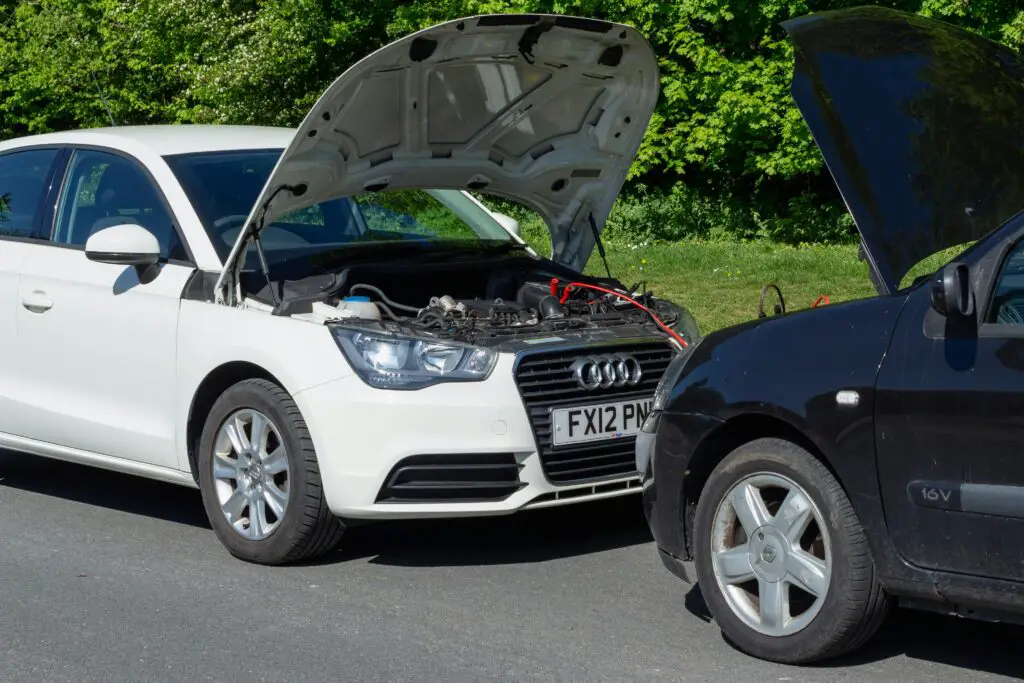Looking for how to charge a car battery with another car? A dead car battery can be a frustrating experience, especially when you’re in a hurry. Thankfully, with the help of another car, you can recharge your battery and get back on the road quickly. This process, commonly known as jumpstarting, is straightforward if done correctly. Here’s a detailed guide on how to safely charge a car battery using another vehicle.
Safety First
Before connecting anything, consider these essential precautions:
- Inspect the Batteries: Ensure neither battery is damaged or leaking.
- Turn Off Both Vehicles: Both cars should be completely off before connecting jumper cables.
- Check the Jumper Cables: Make sure the cables are in good condition, with no exposed wires or damage.
- Position the Cars: Park the cars close enough for the jumper cables to reach both batteries, but ensure they’re not touching.
Step-by-Step Guide
Follow these steps to safely charge your car battery with another car:
1. Locate the Battery Terminals
Identify the positive (+) and negative (-) terminals on both batteries. The positive terminal often has a red cover or marking and is even bigger, while the negative terminal is usually black and smaller.
2. Connect the Red (Positive) Cable
- Attach one end of the red cable to the positive terminal of the dead battery.
- Attach the other end of the red cable to the positive terminal of the good battery.
3. Connect the Black (Negative) Cable
- Attach one end of the black cable to the negative terminal of the good battery.
- Attach the other end of the black cable to an unpainted metal surface on the car with the dead battery. This acts as a grounding point, reducing the risk of sparks near the battery.

4. Start the Working Vehicle
Turn on the car with a good battery and let it run for a few minutes. This allows the dead battery to receive an initial charge.
5. Start the Car with the Dead Battery
Try starting the car with the dead battery. If it doesn’t start immediately, wait another minute or two and try again.
6. Let Both Cars Run
Once the dead car starts, let both vehicles run for a few minutes to further charge the battery.
Disconnecting the Jumper Cables
To safely disconnect the cables, reverse the connection order:
- Remove the black cable from the unpainted metal surface on the dead car.
- Remove the black cable from the negative terminal of the good battery.
- Remove the red cable from the positive terminal of the good battery.
- Remove the red cable from the positive terminal of the dead battery.
Avoid letting the cable clamps touch each other or any metal surfaces during disconnection.
Tips for Success
- Drive the Car: After jumpstarting, drive the car for at least 15-30 minutes to allow the alternator to recharge the battery fully.
- Test the Battery: If the battery continues to die, it might need replacement or further inspection.
- Invest in a Portable Charger: For future emergencies, consider keeping a portable battery charger in your car.
Final Thoughts
Learning how to charge a car battery with another car is an invaluable skill for any driver. By following the steps above, you can safely and effectively jumpstart your vehicle in no time. Remember to follow the proper sequence and safety precautions to avoid damage or injury.
Do you have a jumpstarting tip or experience? Share it in the comments below!
Discover more from Chikwem
Subscribe to get the latest posts sent to your email.